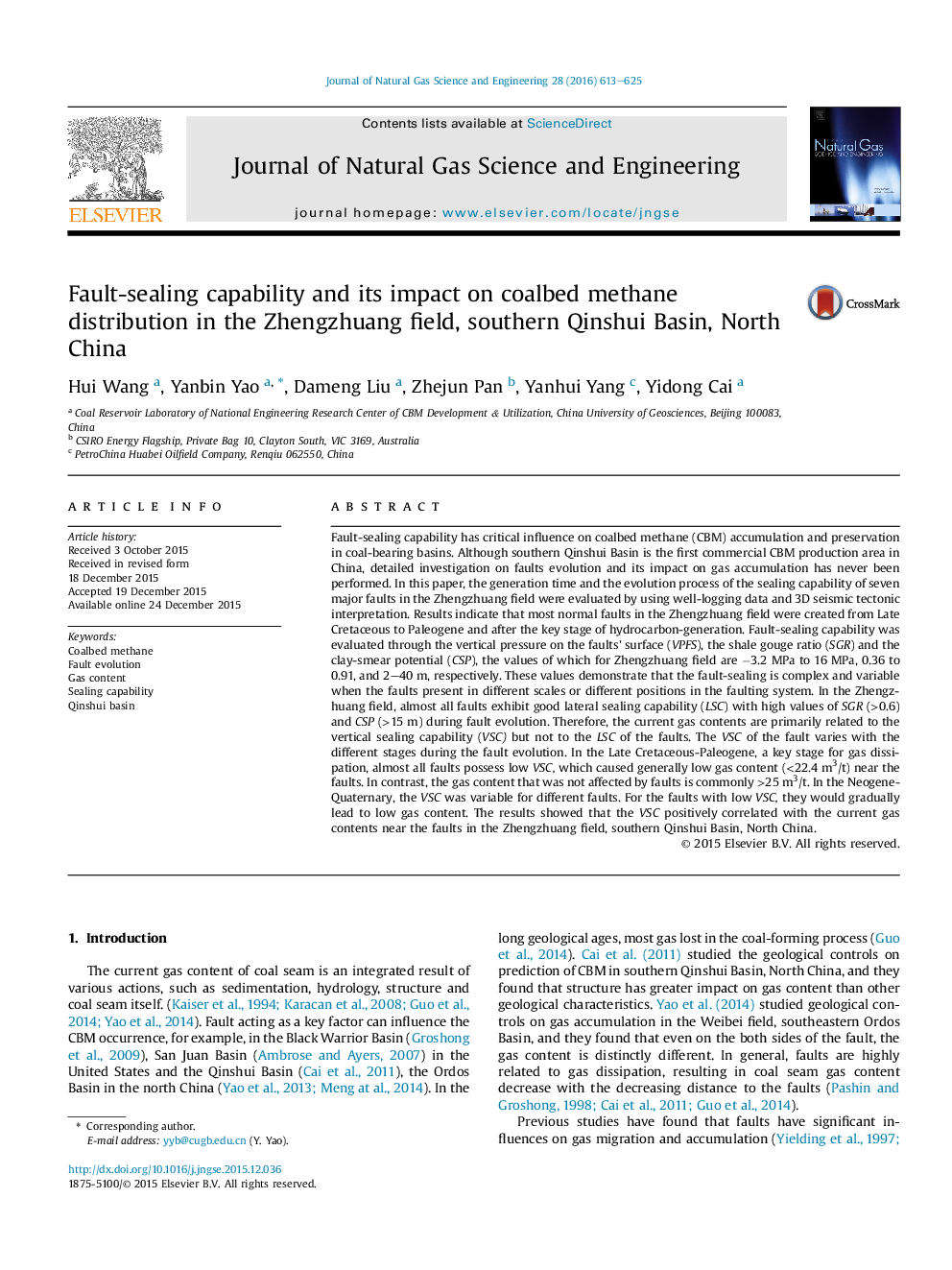| کد مقاله | کد نشریه | سال انتشار | مقاله انگلیسی | نسخه تمام متن |
|---|---|---|---|---|
| 1757317 | 1523013 | 2016 | 13 صفحه PDF | دانلود رایگان |
عنوان انگلیسی مقاله ISI
Fault-sealing capability and its impact on coalbed methane distribution in the Zhengzhuang field, southern Qinshui Basin, North China
دانلود مقاله + سفارش ترجمه
دانلود مقاله ISI انگلیسی
رایگان برای ایرانیان
کلمات کلیدی
موضوعات مرتبط
مهندسی و علوم پایه
علوم زمین و سیارات
علوم زمین و سیاره ای (عمومی)
پیش نمایش صفحه اول مقاله

چکیده انگلیسی
Fault-sealing capability has critical influence on coalbed methane (CBM) accumulation and preservation in coal-bearing basins. Although southern Qinshui Basin is the first commercial CBM production area in China, detailed investigation on faults evolution and its impact on gas accumulation has never been performed. In this paper, the generation time and the evolution process of the sealing capability of seven major faults in the Zhengzhuang field were evaluated by using well-logging data and 3D seismic tectonic interpretation. Results indicate that most normal faults in the Zhengzhuang field were created from Late Cretaceous to Paleogene and after the key stage of hydrocarbon-generation. Fault-sealing capability was evaluated through the vertical pressure on the faults' surface (VPFS), the shale gouge ratio (SGR) and the clay-smear potential (CSP), the values of which for Zhengzhuang field are â3.2 MPa to 16 MPa, 0.36 to 0.91, and 2-40 m, respectively. These values demonstrate that the fault-sealing is complex and variable when the faults present in different scales or different positions in the faulting system. In the Zhengzhuang field, almost all faults exhibit good lateral sealing capability (LSC) with high values of SGR (>0.6) and CSP (>15 m) during fault evolution. Therefore, the current gas contents are primarily related to the vertical sealing capability (VSC) but not to the LSC of the faults. The VSC of the fault varies with the different stages during the fault evolution. In the Late Cretaceous-Paleogene, a key stage for gas dissipation, almost all faults possess low VSC, which caused generally low gas content (<22.4 m3/t) near the faults. In contrast, the gas content that was not affected by faults is commonly >25 m3/t. In the Neogene-Quaternary, the VSC was variable for different faults. For the faults with low VSC, they would gradually lead to low gas content. The results showed that the VSC positively correlated with the current gas contents near the faults in the Zhengzhuang field, southern Qinshui Basin, North China.
ناشر
Database: Elsevier - ScienceDirect (ساینس دایرکت)
Journal: Journal of Natural Gas Science and Engineering - Volume 28, January 2016, Pages 613-625
Journal: Journal of Natural Gas Science and Engineering - Volume 28, January 2016, Pages 613-625
نویسندگان
Hui Wang, Yanbin Yao, Dameng Liu, Zhejun Pan, Yanhui Yang, Yidong Cai,